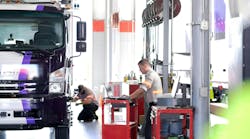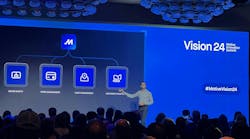ARTBA said that funding target is based on data from the U.S. Department of Transportation’s 1999 report to Congress on the condition and investment needs of the nation’s surface transportation system. ARTBA said DOT’s report makes clear that a $50 billion annual federal investment is necessary just to maintain current highway and bridge conditions and system performance.
ARTBA also said that there will likely be an annual $17-billion funding gap between anticipated federal highway investment in fiscal year 2003, the last year authorized by the Transportation Equity Act for the 21st Century or TEA-21, and the $50-billion investment it says is needed. To make significant improvements to the country’s highway and bridge system would require more than a $50-billion federal program, the group said. It prefers an annual target of $65 billion.
ARTBA said it has several suggestions for increasing highway and bridge funding. First, the group said annually drawing down on the estimated $27-billion balance in the Highway Trust Fund (HTF) would provide an additional $5 billion per year.
A one-cent per gallon increase in the federal motor fuels excise tax, according to ARTBA, would generate $2 billion per year to the HTF. Tax-exempt financing for transportation capital projects and the implementation of innovative financing mechanisms could help spur investment in highway projects.
ARTBA also said eliminating federal motor-fuel fee evasion penalties would provide an additional $1.8 billion per year to the HTF. Eliminating the federal tax subsidy on ethanol-based motor fuels sales would generate an additional $1.1 billion annually for the HTF.
Finally, indexing the federal motor fuels tax to the Consumer Price Index would generate an estimated additional $900 million per year to the HTF, ARTBA said.


